This is the third and final part of the tour to Campania that I organized as a member of the Dutch association of Vinologists (Verenigde Vinologen Nederland). After a day of getting to know the wines of Sannio, we continued our exploration of Campanian wine at the Costa d’Amalfi. In this final part we get to know the wines of Irpinia.

Irpinia DOC wines can be made from grapes from all over the province of Avellino, but the three DOCGs can only be made from specific municipalities. Taurasi DOCG is for red wines of Aglianico, and was the first DOCG in Southern Italy, established in 1993. Greco di Tufo DOCG has the smallest production area and consists of only 8 municipalities around the town of Tufo. There are 2 municipalities in which both Taurasi DOCG and Fiano de Avellino DOCG may be produced. Despite the small area, the production of Greco is larger (5 million bottles per year) than that of Fiano (3 million bottles). Greco and especially Fiano are both suitable for aging. From 2019, there is a Riserva version of both DOCGs, with an additional year of aging before the wine is allowed to be released. The annual production of Taurasi is only about 1 million bottles. Vineyards in Irpinia are between 300 and 900 meters above sea level. Because of that, the temperature is 5 to 8 degrees Celsius (9 to 14 degrees Fahrenheit) higher than at the coast. After the devastating earthquake of 1980, a lot of new wineries were established in Irpinia. Now there are 300, a lot of them small.
Mazzella
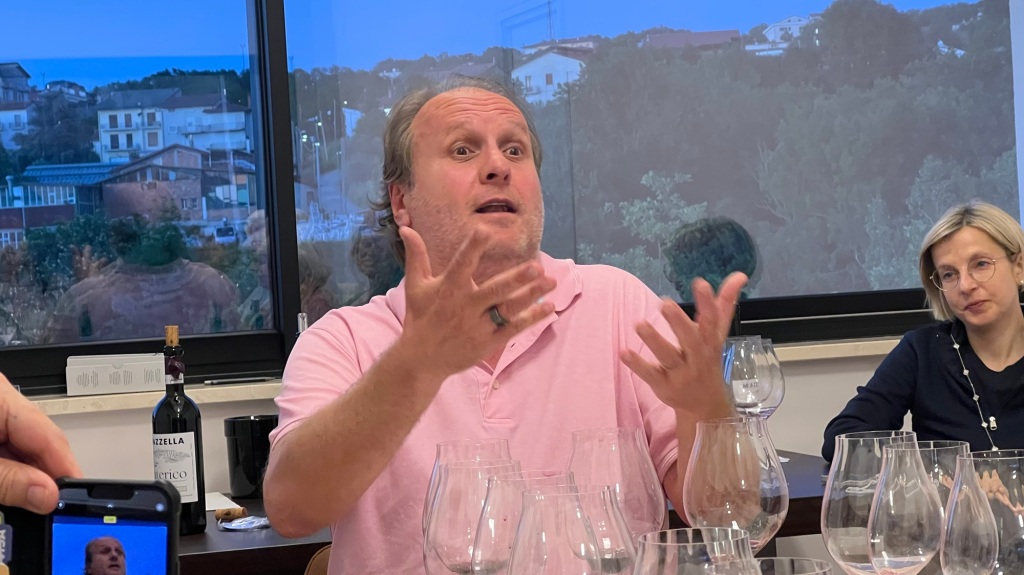
The first winery we visited in Irpinia was Mazzella in the municipality of Paternopoli. Gian Luca Mazzella used to be a journalist, but became a winemaker and gained experience in wineries in different European countries. He is very passionate about fine wine, and thought it was strange that there existed no expensive icon wines in Italy south of Tuscany. Especially since in the relatively cool climate of the hills of Irpinia, it should be possible to produce a fine wine with aging potential from the late-ripening Aglianico. And so he set out to create such a wine, and called it Paterico.

He has bought 3.5 hectares (10 acres) of old vine Aglianico, and has leased a further 2.5 hectares (6 acres). The old vines are trained as pergolas and look like trees. Gian Luca took us to one of those vineyards to show us. To get high quality, he restricts the yields to a very low 1000 litres per hectare. The first vintage was 2019 and it has already been sold out. He has produced only about 3000 bottles and is not planning to ever produce more than 5000. Paterico has at once become the most expensive wine of Italy south of Tuscany.
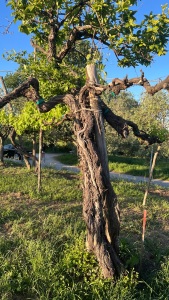
Paterico is Taurasi DOCG, but it is different from most other Taurasi because the vineyards used for Paterico are about 530 meters above sealevel with southern exposure, while most other Taurasi is at 300 meters with varied sun exposure. Paterico is more elegant. The main difference between a DOC and a DOCG is that a panel needs to taste the wine and assert that it is like a typical Taurasi. I asked Mazzella about this, but he said that so far this had not turned out to be an issue, even though Paterico is different from most other Taurasi. Aglianico can produce rustic wines if the skin is not ripe. But since Aglianico does not get overripe and retains its freshness, Mazzella harvests very late. The 2019 was harvested on November 18. He destems the grapes to remove green tannins from the stems. He uses spontaneous fermentation, which takes 3 to 4 weeks. He doesn’t press and macerates for a long time: 2019 for 3 months, 2020 for 55 days. The malolactic starts as late as August of the year after the harvest, which is very late. The 2019 was aged for 4 years in oak, the 2020 for 3 years.

We tasted 2019 and 2020, which had just been bottled, with Ornellaia 2019 as a benchmark comparison. The Paterico 2019 was fresh and elegant with high acidity and the tannins still need a lot of time. The Paterico 2020 had beautiful cherry fruit, more but softer tannins than 2020, lower acidity than 2019, and a hint of eucalyptus. Although it was younger than 2019, it was already more balanced. It was very elegant and it is clear that Mazzella is trying to produce something closer to a classic Médoc than to Taurasi or a red from Southern Italy in general. I am very curious how this wine will develop over time. The Ornellaia 2019 had a lot of soft tannins and a hint of green bell pepper. Nobody in our group thought it was as good as the Paterico, but it is also (slightly) less expensive than Paterico.
Trattoria Concè

For dinner we went to Trattoria Concè, which specializes in local dishes from Irpinia. We started eating on a very large table outside, but had to move inside after the antipasti as it was getting too chilly.

We started with the house antipasti, which consisted of salumi and cheese, mousse of ricotta with tomato, beans in Naepolitan pork and beef ragù, focaccia with black summer truffle, and deep fried zucchini blossoms. As primo piatto we had a local dish with a complicated name, Maccaronara allo Scarpariello, which is actually just fresh pasta with a sauce of cherry tomatoes, basil, and grated parmigiano. The secondo was grilled lamb chops with roasted potatoes, and we had an apple and vanilla tart as the dolce.

It goes without saying that all of this was accompanied by wine from Irpinia:
- Colli di Lapio, Cielia Romano Fiano di Avellino 2022
- Cantine di Marzo, Greco di Tufo 2022
- Di Meo, Hamilton Taurasi 2009
- Quintodecimo, Taurasi Riserva 2014
- Cinque Querce Taurasi Riserva 2010
Consorzio Irpinia

We were received at the Petilia winery by Teresa Bruno, the president of the Irpinia Consorzio Tutela Vini and owner of Petilia together with her brother Roberto, as well as Ilaria Petitto, the vice-president of the consortium and owner of the Donnachiara winery, and winemaker Arturo Erbaggio.
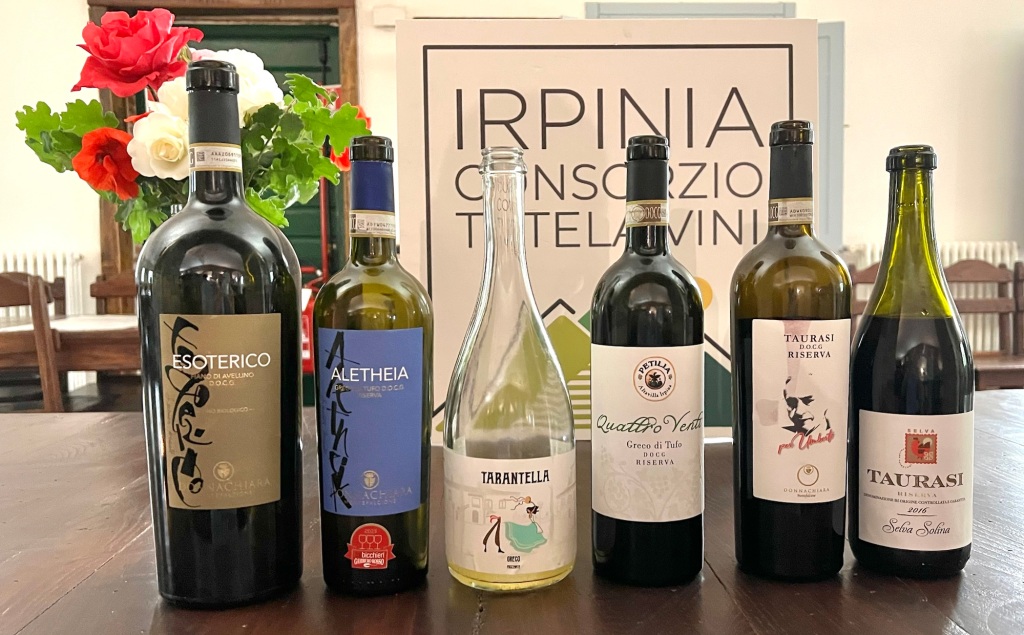
These are the wines we tasted:
- Donnachiara, Esoterico Fiano di Avellino DOCG 2022 (organic, made in stainless steel, late harvest in October): floral, mineral, elegant
- Donnachiara, Aletheia Greco di Tufo Riserva 2021 (aged 12 months in stainless steel with stirring of the lees, then an additional year in the bottle)
- Petilia Tarantella 2023 (sparkling Greco, made by bottling wine with enough grape juice to get a second fermentation going in the bottle to get 4 bars of pression, no sulfite is used, because the CO2 will preserve the wine): orange zest, golden, juicy, fresh, reminds me of cider
- Petilia Quattro Venti Greco di Tufo Riserva 2020 (from the top of a hill at 500 meters above sea level, the name refers to the wind that comes from all four cardinal directions at the top of the hill, only 3000 bottles produced from 1 hectare (2.5 acres), aged 18 months in stainless steel with stirring of the lees): salty, fresh, mineral.
- Donnachiara Per Umberto Taurasi Riserva 2019 (from sandy soil at only 300 meters above sea level): oak, ripe soft tannins, ‘warm’
- Selva Solina Taurasi Riserva 2016 (cold maceration, aged in 500 litre medium toasted oak tonneaux): fresher style, more structure
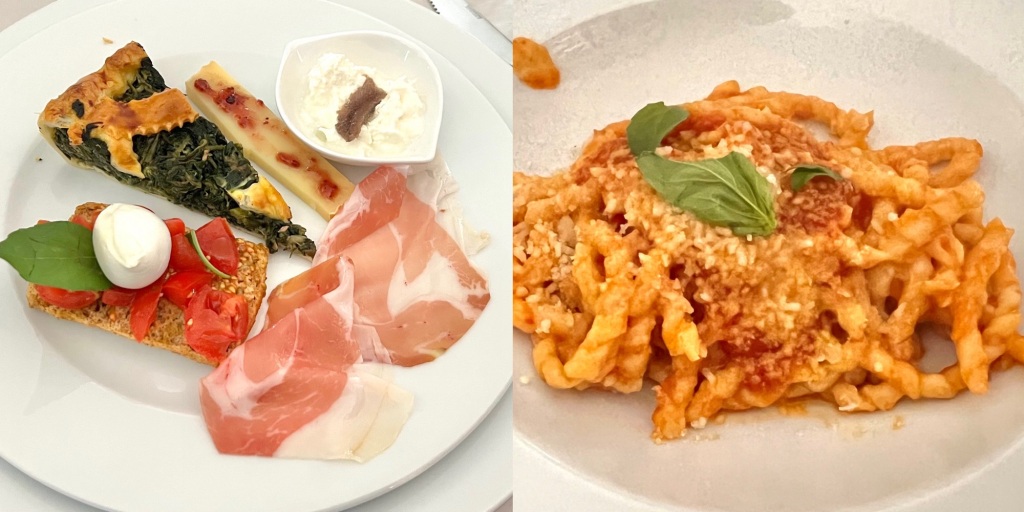
Teresa prepared a delicious lunch for us with produce from the Petilia farm: antipasti and hand-made fussili with fresh tomato sauce.
Feudi di San Gregorio
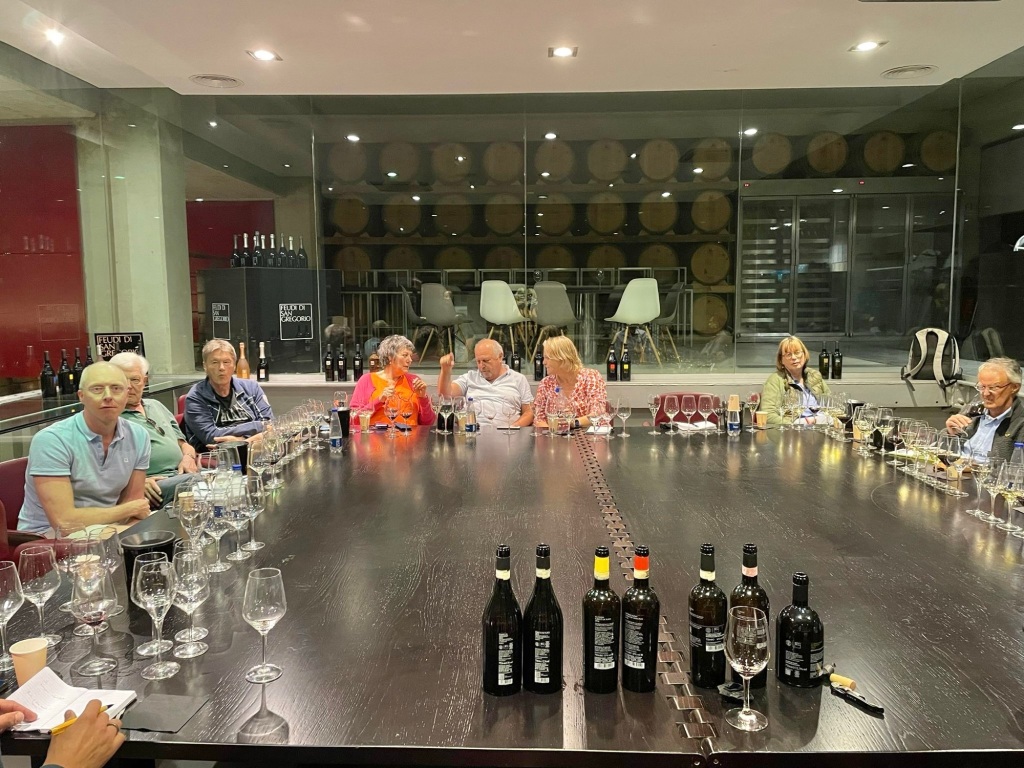
We also visited the largest winery in Irpinia: Feudi di San Gregorio. The tasting room offers 360 degree views of the huge cellar.

The wines we tasted at Feudi were:
- Pietracalda Fiano di Avellino Riserva DOCG (stainless steel for 1 year, then 1 year in the bottle):
- 2022: yellow apple, mineral, structured
- 2016: developed, roasted almonds, more body, balance, and complexity than 2022
- Cutizzi Greco di Tufo Riserva (stainless steel for 1 year, then 1 year in the bottle):
- 2022: peach, fresh, balance, crispy, structure
- 2016: golden, fresh, developed, honey, less body, balance, and complexity than 2022
- Taurasi (1 year in oak, both large barrels and barrique)
- 2019: dark fruit, acidity, soft tannins
- 2008: developed nose, abundant but soft tannins, flavorful
- Studi Sirica 2019 (discovered in an old pergola-trained vineyard of 4 to 5 hectares (10 to 12 acres), the variety locally named as Sirica turns out to be Syrah/Shiraz, only 6000 bottles produced): relatively light color, soft tannins, earthy
- Serpico Irpinia Aglianico DOC 2016 (from 4 meters high pergola-trained very old (100 years+) prephyloxxera vines, 18 months in large and small oak): wonderful, soft tannins, elegant, fresh, earthy
I thought it was interesting to notice that (at least in the case of Feudi), the Fiano had aged better than the Greco.
Terredora di Paolo

Our next visit was to Terredora di Paolo. The Mastroberardino family has been in the wine business since the end of the 18th century and are ambassadors of Irpinian wine. Because of a disagreement between the two brothers Paolo and Angelo, there now two wineries run by the Mastroberardino family, with only one of them using the family’s name (which we visited next). We were received by Daniela Mastroberardino. Terredora is named after Dora, Daniela’s mother.

At Terredora we had a wonderful horizontal and vertical tasting of no less than 14 wines, comparing the same wine at different vintages and/or different wines of the same vintage:
- Greco di Tufo Terre degli Angeli (replanted using 4 clones, made in stainless steel):
- 2022: honey
- 2018: honey, developed, bitter note
- Greco di Tufo Loggia della Serra (plant material based on mass selection, made in stainless steel):
- 2022: mineral, more acidic than Terre degli Angeli
- 2018: complex, mineral, balance
- Fiano di Avellino
- 2022: yellow fruit, creamy
- 2022: mineral
- Fiano di Avellino Riserva Campore (old vines, 6 months in French oak barriques)
- 2019: creamy, balance, structure, already a bit developed
- 2009: golden color, developed aroma, complex, mineral, full body, long finish, not oxidated at all despite the age
- Taurasi Fatica Contadina 2015 (released after 6-7 years): earthy fresh, ripe tannins
- Taurasi Pago dei Fusi
- 2015: earthy, restrained aroma, soft tannins, fresh, more international style than Fatica Contadina
- 2009: velvet tannins, restrained aroma, mineral
- 2008: developed aroma, fresh, tannins still agressive
- 2007: mineral, a lot of tannins but velvety, dried fruit, excellent vintage
- Taurasi Riserva Campore 2007: excellent fruit, seems much younger and still has a lot of color, a lot of tannins but velvety, wonderful
Mastroberardino
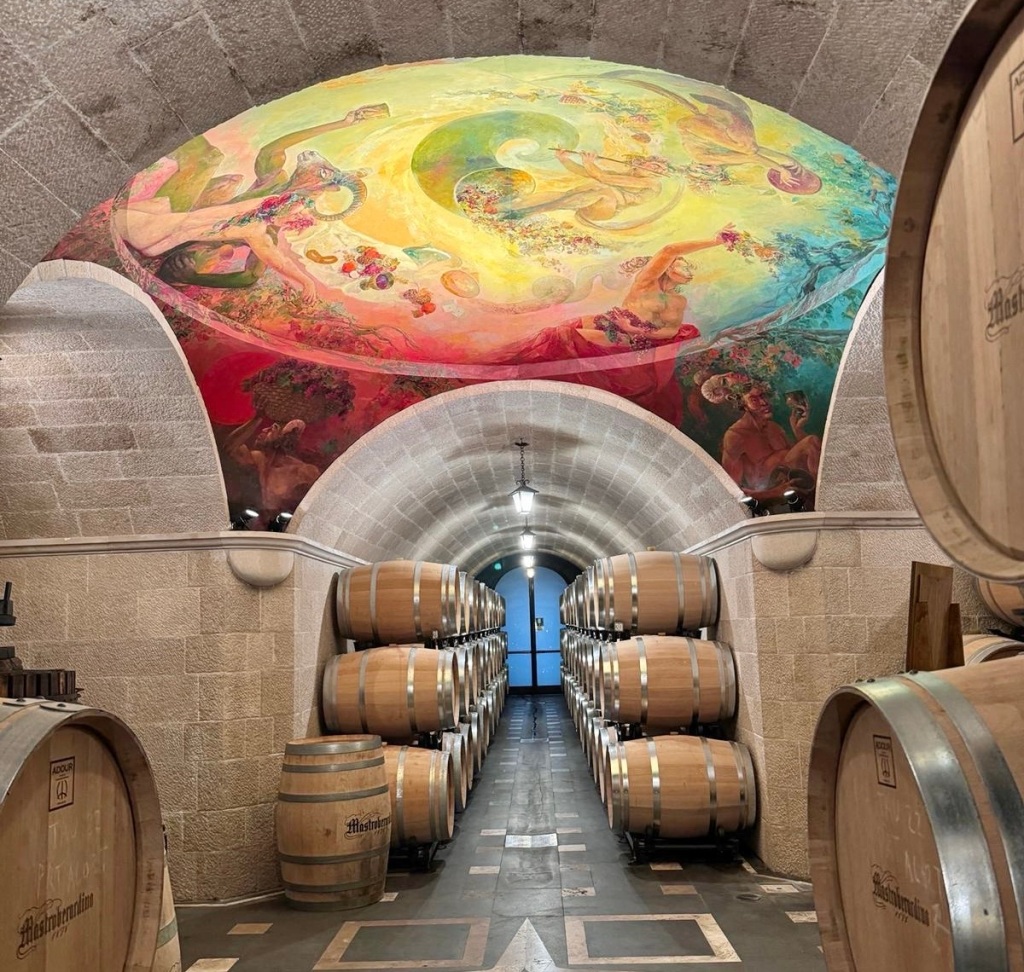
Our final winery visit was to Mastroberardino. We started with a visit to the cellar and the museum. Mastroberardino has 260 hectares (600 acres) of vineyards in Taurasi, Greco di Tufo and Fiano di Avellino DOCGs. They also have some Falanghina del Sannio DOC. They produce about 1.8 million bottles per year.

In the museum is an impressive collection of old bottles going back to 1928, of which some are still used for vertical tastings.

Fred made some excellent suggestions for wines we would like to taste, including the wine that was made from vineyards at the historical location of vineyards in Pompei (a project that has been discontinued in 2021).

We tasted these wines:
- Nero a metà 2019 (blanc de noir from Aglianico, harvested mid October, aged 10 months on the lees in stainless steel, 18 months in bottle): honey, very light color.
- More Maiorum 2017 (50% Fiano, 50% Greco, 18 months in French oak barriques, then 42 months in bottle, with malo): complex, balance
- Greco di Tufo Riserva Stilemma 2018 (aged 24 months with stirring of the lees, 7% aged in oak, 93% in stainless steel, then 24 months in bottle): almond, developed
- RediMore Irpinia Aglianico DOC 2022 (Mirabella vineyard, one biotype of Aglianico selected from old biotypes, 6 months in French oak barrique, 1 year in bottle): fruity, soft tannins, easy to drink despite the amount of tannins
- Taurasi Riserva DOCG 2017 (13 months in large Slavonian oak, 48 months in bottle): tannins still astringent, fresh
- Naturalis Historia Taurasi Riserva 2016 (old vines of 50+ years, 24 months in French oak barrique, 52 months in bottle): fruity, velvet tannins, complex, balance, wonderful
- Taurasi Riserva DOCG 1998 (last vintage in large chestnut barrels): soft tannins, fruit still present, balance, complex, elegant.
- Villa dei Misteri 2012 (Piedirosso, Aglianico and Sciascinoso from 1.5 hectares at historic vineyard sites in Pompei, 1700 bottles produced from 1.5 hectares): developed aroma, fruity taste, some eucalyptus
Dinner with Villa Matilde
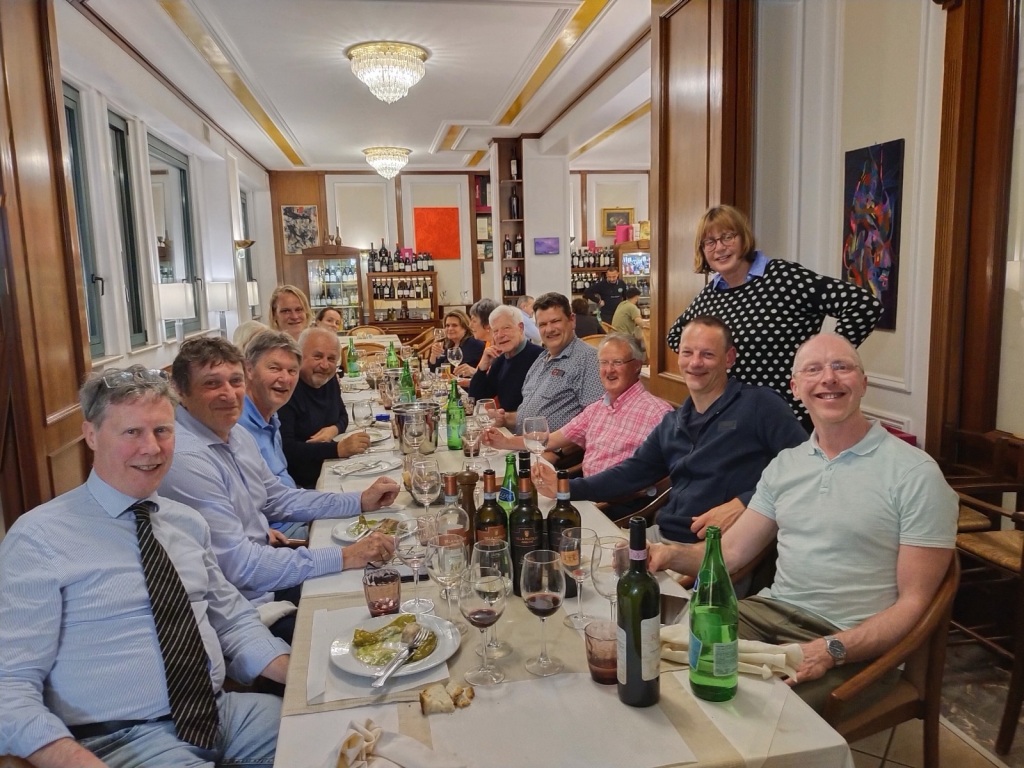
We were really sorry that we had to skip our visit to Villa Matilde due to the terrible flight delay we had on our first day, so we were very glad that Marco Marchiori of Villa Matilde had accepted our invitation to join our final dinner of the trip (at Hostaria Manfredi) and had even brought some wines. Villa Matilde is a winery in the Falerno del Massico DOC in the province of Caserta that produces white from Falanghina and red from a blend of Piedirosso and Aglianico. Falernum was already famous in Roman times for the quality of its wine. We had also received a magnum of Fiano di Avellino DOCG 2019 from Pietracupa to enjoy over dinner.
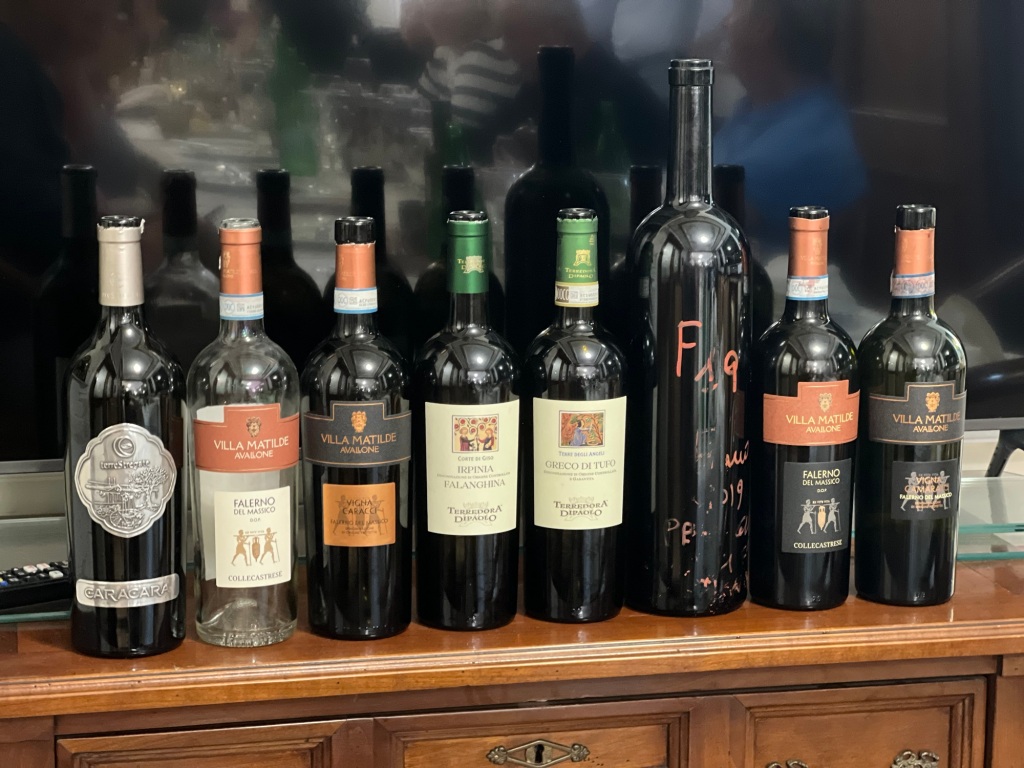
With our dinner we enjoyed:
- Terre Stregate Caracara Falanghina 2019
- Villa Matilde Falerno del Massico Bianco (100% Falanghina, 3 months in stainless steel)
- Villa Matilde Falerno del Massico Bianco Vigna Caracci (100% Falanghina from “cru”, 3 months in amphora, barrique, and stainless steel, with partly stirring of the lees)
- Terredora Irpinia Falanghina DOC
- Terredora Greco di Tufo DOCG
- Pietracupa Fiano di Avellino DOCG 2019
- Villa Matilde Falerno del Massico Rosso (80% Aglianico, 20% Piedirosso, aged 10 to 12 months, for 50% in French oak barriques (33% new), 50% in large oak barrels)
- Villa Matilde Falerno del Massico Rosso Vigna Camarato (80% Aglianico, 20% Piedirosso from “cru”, 12 to 18 months in French oak (33% new, 33% second passage, 33% third passage), followed by 12 to 18 months in bottle)

For the food we had antipasti consisting of salumi and cheese, fried zucchini flowers stuffed with ricotta, and Parmigiana di Melanzane. The latter was different from the version that I make myself, because the eggplant slices had been dipped in batter before frying them. The primo was paccheri with a ragù of bacalà (dried cod), sun-dried tomatoes, capers, and olives. The secondo was pork fillet, wrapped in prosciutto, with friggitelli of green peppers and mashed potato. The meal ended with some homemade biscotti with hazelnuts.
Pompei & Pizza
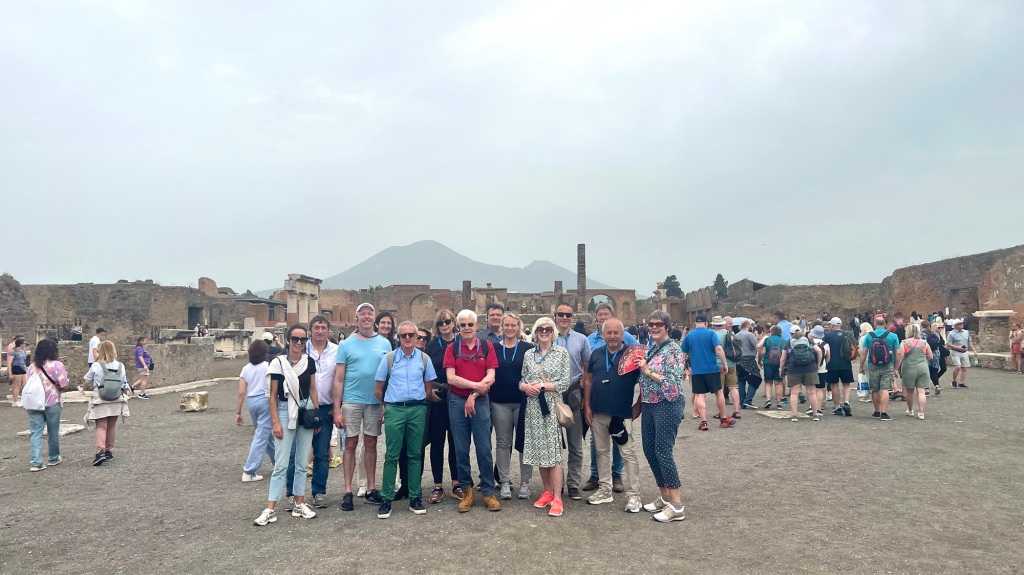
On our last day we had a guided tour of Pompei. as well as…

…Neapolitan pizza at Diego Vitagliano, which has won numerous awards for its pizzas.

We had 8 different pizzas, including Margherita, with ham and pistachios, or with anchovies. They were all delicious.

We had some wine with the pizza as well. All from rare autochtonous grape varieties from the Cetara province (which we missed on the first day because of the flight delay).
- Trentapioli Asprinio d’Aversa DOC Metodo Martinotti Brut (100% Asprinio, which is a synonym for Greco, charmet method): high acidity
- Il Verro Pallagrello Nero Terre del Volturno IGT (100% Pallagrello Nero): rustic medium bodied red wine
- Il Verro Pallagrello Bianco Terre del Volturno IGT (100% Pallagrello Bianco): nice aromatic and balanced white wine
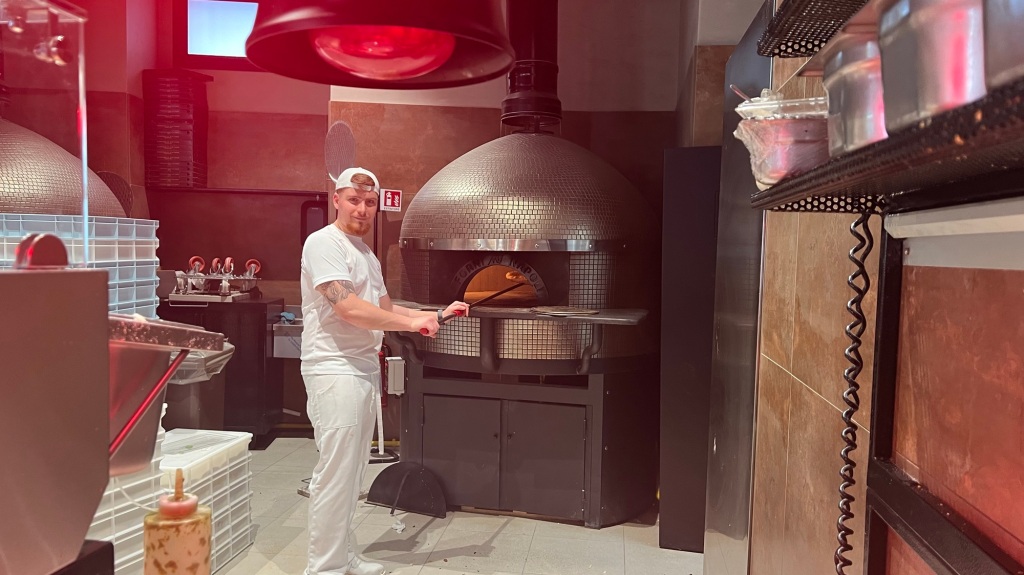
What made this trip to Campania special is that all the wines we tasted were from local autochtonous grape varieties, some well known to wine lovers like us, like Aglianico, Fiano, Greco, and Falanghina, and others we had never tasted before or even heard of. During our trips to Piemonte and Lombardia, there were certainly wines from local autochtonous grapes, but also many wines from French varieties like Chardonnay, Pinot Noir, and Merlot. It may make selling the wines from Campania on the international markets more difficult, but it certainly makes the wines more interesting.


Looks like more fun! That’s a lot of wines. I’ve never wanted to go to Naples, but that pizza does look good.
LikeLiked by 1 person